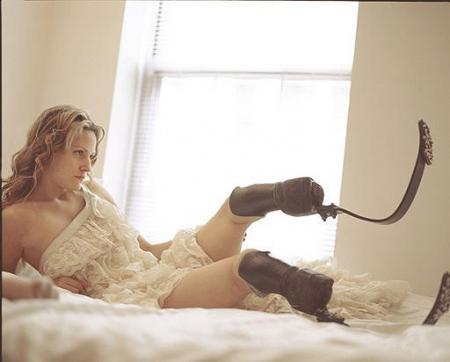Serendip is an independent site partnering with faculty at multiple colleges and universities around the world. Happy exploring!
Blogs
Living The Good Lie
In our discussion of Mimi Swartz’s “Living the Good Lie,” we talked about what resulted in, for these men, the inability for the coexistence of homosexuality and devotion to religion. Judith Glassgold, the chair of a taskforce on LGBT issues from the American Psychological Association, stated in an interview for the article, “Among therapists — both among gay activists and the religious — we can have a discussion. We all agree that arousal and orientation are not under someone’s volition. What we can work on is self-acceptance, integration identity and reducing stigma.” I continued to think about whether homosexuality and religion are necessarily mutually exclusive, or rather if there are ways in which the two can coexist within an individuals’ identity. I kept thinking back to interviews that I’ve conducted with scholars in Argentina regarding their passage of same-sex marriage legislation. One of them, Daniel Jones, explained to me that evangelicals weren’t ubiquitously opposed to the bill. I found a paper he recently wrote where he lays out some of the tactics used by various evangelical groups to approach homosexuality. One strategy in particular stood out to me; the Evangelical Church of the Río de la Plata published a document in 2000 stating that the sexual orientation of a person is fixed and predetermined; homosexuality is a concept from the nineteenth century that, as a word, never appears in the original words of the Bible.

My Access to Education Map
My friend Midley deserves credit (I borrowed her markers) so she's in the picture too!

Snapshots Through my Education
Honk. Honk.
Eyes open just as the sun comes up. The big sunshine yellow bus sits, waiting for me as I pull the velcro on my shoes snugly across the tops of my little feet, pink Barbie backpack hung neatly over my shoulders.
I blink and I am in the middle of Ms. Thomas' classroom, showing off my latest story to the class. This time its about the dinosaurs that tried eating my dog for breakfast.
I blink and I am walking down the corner, to all the third classrooms. As a measly second grader my knees start to shake, but then I remember my duty as the official mailwoman of Dutch Neck School, and I march on fearlessly.
I blink and I am finally in third grade, waiting to move onto bigger and better things. It is the last time I shake hands with Mr. Grabell on my way out to catch the bus...
I blink... and my two years in upper elementary blur together, not quite making sense, but only evoking the excitement of finally becoming a middle schooler.
I blink and I am in a sea of braces and glasses. While the pigtails have started to go away, I see Ugg boots and mini skirts take its place. But I was too busy with my math book under my nose to really pay attention to that.
I blink and my years as a middle schooler come to a close and I walk down the aisle of teachers, reaching their hands out to congratulate me and the 364 other students in my class.
Just as I blink, I am walking down the halls of High School North, so used to being at the top, that this idea of listening to the seniors makes no sense.

Making Disability "Palatable"
In reading through the notes for the “Cripping Sex and Gender” disability panel, I came across class notes from when Kristin taught the course that included images of Aimee Mullins (/exchange/courses/gas/f09/archive/15). I was struck by these images, and reminded of Wilchin’s discussion of the gender in relation to sexuality and the gay movement- how the gay rights movement has tried to “normalize” homosexuality by presenting with the idea that gays and lesbians are just like everyone else (i.e. the image of the monogamous, masculine (but not too masculine) gay couple with two dogs and a house with a white picket fence.) Wilchins argues that though these images have had success in bringing homosexuality into mainstream culture, they ultimately fail to challenge the underlying issue- gender. Creating this new, more “palatable” gay failed to challenge the underlying gender stereotypes that form the foundation of sexual-based discrimination.




